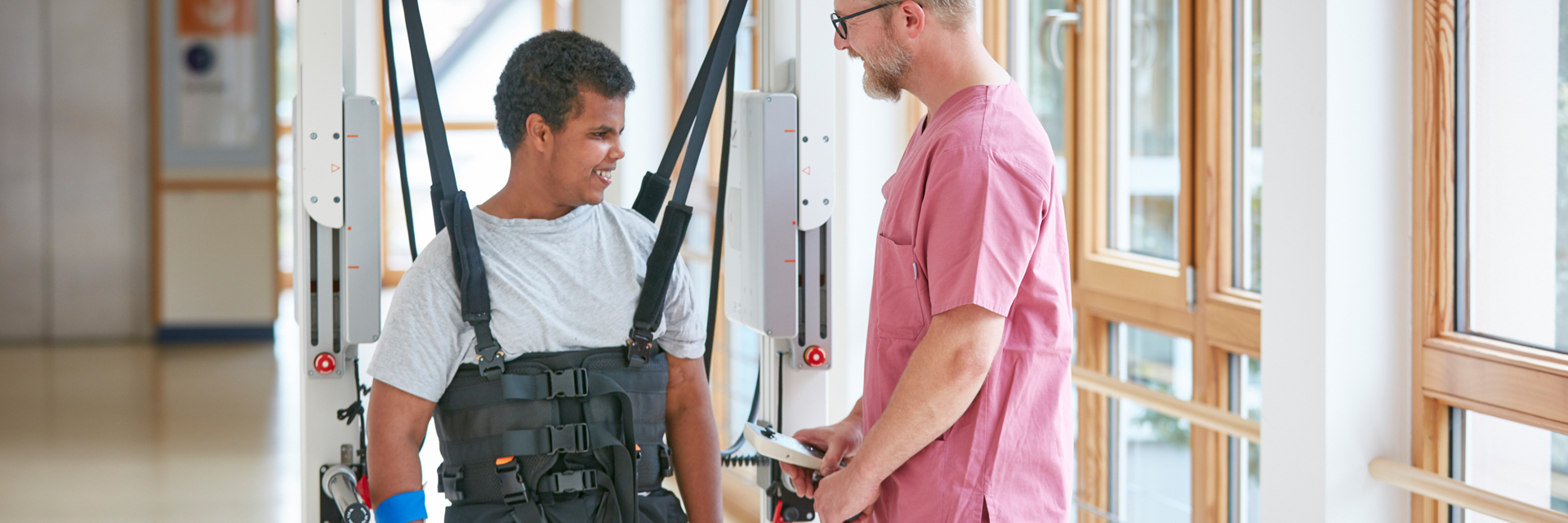
Early Rehabilitation
Step by step back into everyday life
Early rehabilitation is a central care task of the Children's Hospital Schömberg. It forms the interface between acute care and rehabilitation and becomes necessary, for example, after a serious accident with polytrauma or injuries to the brain and spinal cord, after near-drowning or a life-threatening illness.
Early rehabilitation describes the intensive and sensitive nursing, therapeutic and medical care of the affected children and adolescents and their families. This path "back to life" can take a few weeks, but also many months and in individual cases longer than a year. Our medical staff has a lot of experience in the treatment with medication of the sometimes severe and long-lasting accompanying symptoms of this process, which is also called remission.
Relatively often, brain damage leads to the development of symptomatic epilepsy, which we can diagnose and treat with a great deal of experience at the Children`s Hospital Schömberg.
In addition, we carry out further measures within the framework of early rehabilitation. For example, tracheotomised patients can be weaned off the tracheal cannula if the findings allow. We also offer a wide variety of therapies for feeding difficulties. Positioning and mobilisation are mainly carried out by our nursing and therapy team.
It is very important for us to provide patients and their families with detailed advice and support as part of discharge management.
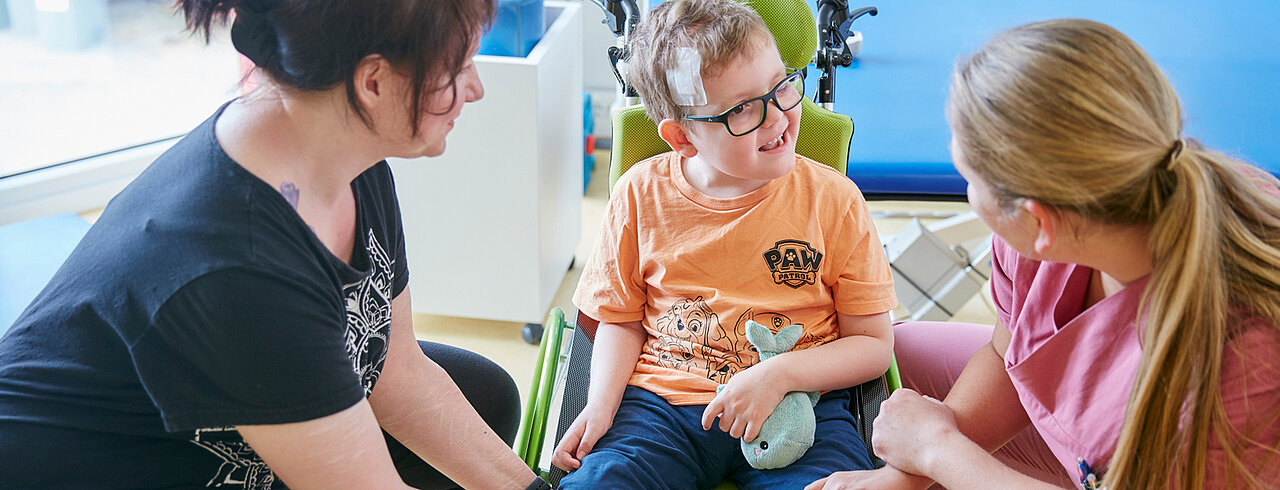
Medical strategies in early rehabilitation
Every early rehabilitation course is different and positive and negative developments are not always predictable. Therefore, predictions about the course of treatment, especially at the beginning of treatment, are not meaningful and do not lead to the desired results.
In contrast to the overall prognosis, there is a good understanding of certain aspects of the remission process which are listed and explaines below.

Pain and the so-called transition syndrome with restlessness, muscle tension, palpitations, sweating and suspended sleep-wake rhythm are typical for the early remission phase. These are often followed by symptoms that can also characterise the picture of cerebral palsy and therefore basically include the same treatment options. Here, as well as in the treatment of other common accompanying symptoms, for example digestive difficulties or depressive episodes, we help patients with our experience.
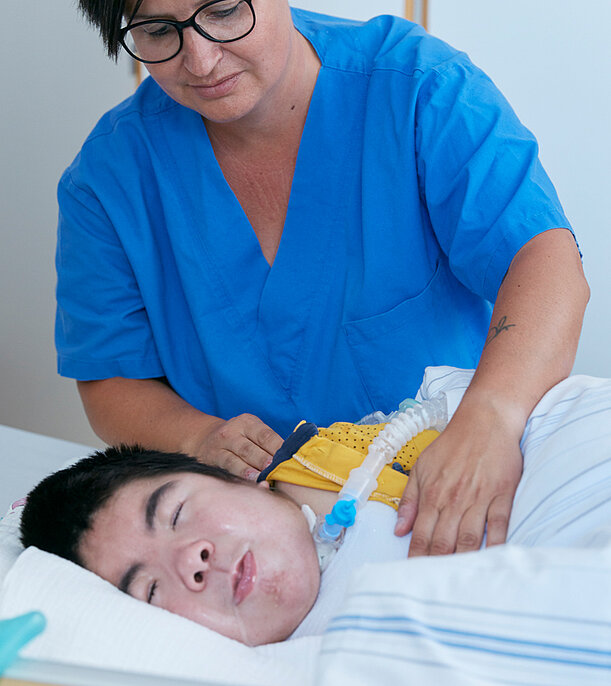
Decannulation, i.e. the removal of the tracheal cannula, strongly depends on the respective situation. We make a decision on the appropriate prescription in close cooperation with the speech therapy department. The neurological findings and a careful assessment of the clinical swallowing function, supplemented if necessary by an endoscopic swallowing examination (FEES), are the decisive factors. If the findings are promising, we implement decannulation step by step.
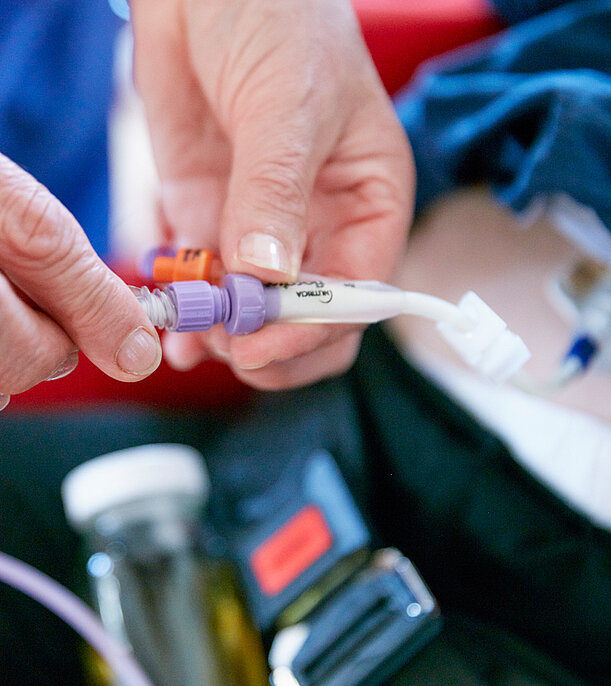
If there is nothing to the contrary, we always aim for an oral nutrition build-up. In the case of long-term oral feeding difficulties, a comprehensive explanation of the advantages and disadvantages of feeding with a nasogastric or PEG tube is given. In the case of a PEG tube, this is done during a short transfer.
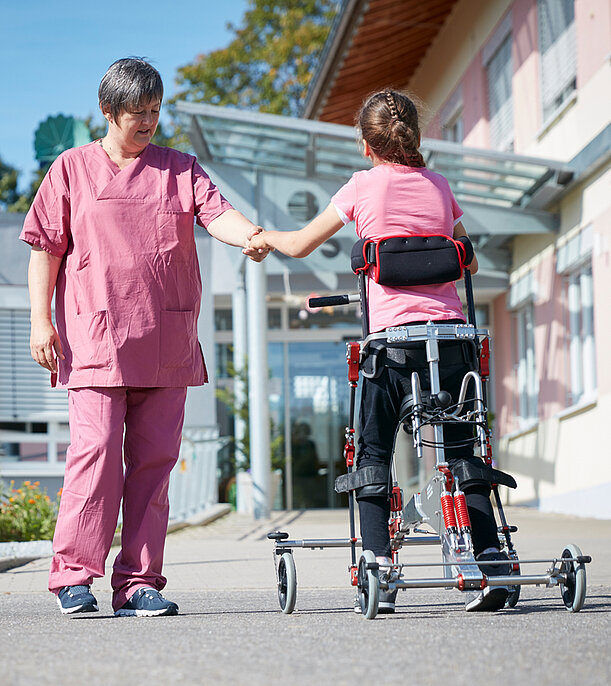
Positioning concepts can serve very different goals and are used by us individually. Decubitus positioning prevents the development of bedsores (decubitus) or supports their healing; drainage positioning helps to expectorate secretions in the area of the trachea and bronchi in the case of swallowing disorders; positioning in the neutral zero position reduces tension and pain.
Mobilisation can play an important role in early rehabilitation. It allows more participation, supports the daily structure and enables therapies in special therapy rooms. In addition, mobilisation for passive standing has a tonus-reducing effect, stimulates breathing and stabilises the circulation, and prevents osteoporosis.
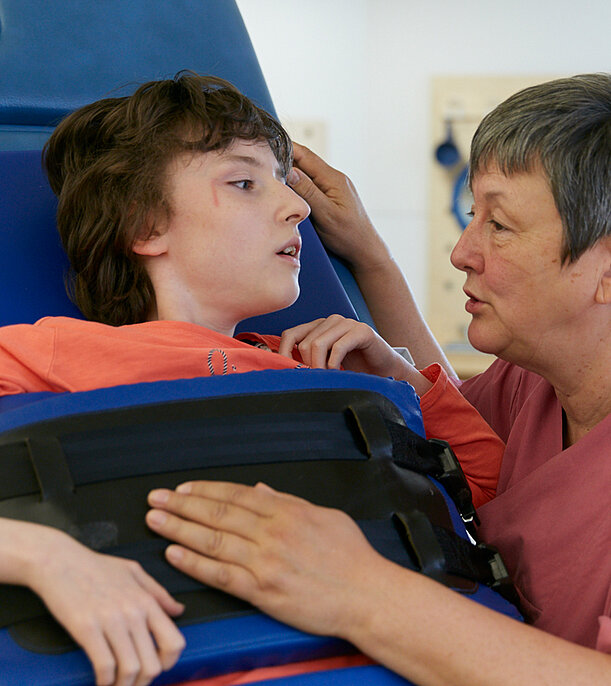
Typical intermediate goals of early rehabilitation are mobilisation into the wheelchair and/or into a standing frame. This is followed by exercises in various walkers and, if necessary, movement trainers. These are available at the children's hospital in Schömberg for all patient sizes.
The positioning and functional orthoses are always adapted to the respective stage of remission. The fitting can either be carried out provisionally by the therapists or in cooperation with medical supply stores. In this way, we can also reliably provide very special and individually adapted positioning systems.
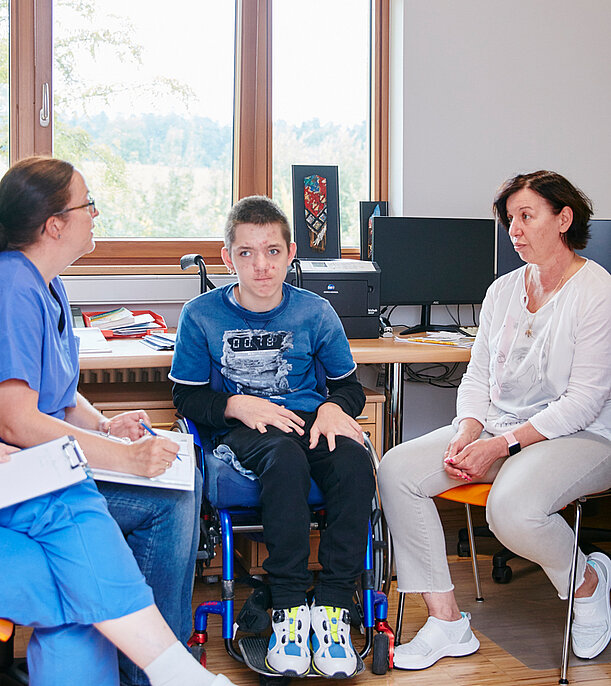
The recovery of physical and mental functions is often only partially successful due to the severe brain damage. This puts the focus on supporting the entire family in preparing for the new life situation. Our discharge management team supports the relatives in word and deed so that they can prepare themselves early and comprehensively for the return home. In this way, we create as seamless a transition as possible from treatment in hospital to everyday life.
You can also find more information at
Discharge management
Clinic social work
Technical terms simply explained
The structure of the airways can be compared to a tree. The trunk is formed by the windpipe, also called the trachea. This first branches into the main bronchi, then further and further to the bronchioles. At the end of the bronchioles, similar to the leaves of a tree, are the alveoli, in which gas exchange takes place.
Decannulation refers to the removal of the tracheal cannula, as is also necessary for a change of cannula. Decannulation is usually used in connection with long-term removal when the cannula can probably be permanently dispensed with again due to improved swallowing and breathing function.
Bringing forth, bringing out, coughing up
Abbreviation for: fibreoptic endoscopic evaluation of the swallowing act. In this swallowing examination, the endoscope (which is only a few millimetres wide) is inserted through the nose into the throat. Special function tests can then be carried out and the swallowing of liquid and food can be followed in real time. Once the examination is complete, a slow-motion review of the findings can be made.
Approximately the position assumed in relaxed standing, facing forward, with legs nearly closed and empty arms hanging loosely down the side of the torso wall.
Externally applied medical aid to influence posture and/or body function, e.g. walking orthosis, corset or positioning orthosis.
Percutaneous endoscopic gastrostomy, i.e. an artificial stomach access created percutaneously, i.e. through the skin, in which there is usually a PEG tube through which the supply of fluids, food and medication can be ensured in patients who have difficulty swallowing, are unconscious or are otherwise severely affected, if the digestive function permits this.
Injury involving multiple body parts or organ systems, where either one of these injuries alone or the combination thereof is immediately life-threatening.
This is also called structural epilepsy. It develops as a result of brain damage or a congenital brain structure disorder. In these cases, the epilepsy is "only" a symptom of the underlying disease.
Reduction of a (pathologically) increased basic tension of the muscles (muscle tone) at rest.
Trachea, cf. also bronchi
A cannula ("tube piece"), usually made of plastic, adapted to the anatomy of a tracheostoma, i.e. a tracheal incision, and the trachea. It keeps the tracheotomy open and allows breathing bypassing the upper airway. Tracheal cannulae are available in many different sizes with many different additional functions, e.g. so-called "speaking cannulae".

